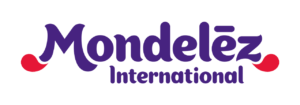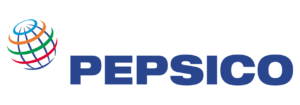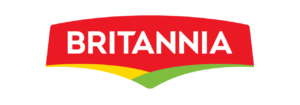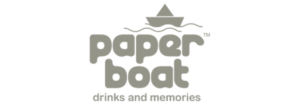The internet has an impact on all areas of our lives, from socializing, entertainment to shopping online. A world without the internet is unthinkable. There’s now a generation of adults who have only known a world where the internet exists, and as they spend more money, e-commerce is poised to grow. It’s becoming more common for people to shop online instead of visiting a brick-and-mortar store. In addition, MMA-Group reports that by 2030, there will be around 500 million online shoppers. That proves the fact that eCommerce is here to stay, and so is the need for e-commerce website creation.
Even if you are someone who wants to start an online business with limited resources or someone who has a brick-and-mortar store and is looking to expand, an e-commerce website can help you unlock a global audience and reach a wider customer base. Entering the e-commerce industry now is a great opportunity for you to win a share of the growing profits. The sooner you start, the sooner you can establish your brand and get the word out.
Our step-by-step guide to e-commerce website creation will walk you through all you need to know to start selling online.
Bill Gates once said: “If your business is not on the internet, then your business will be out of business.”
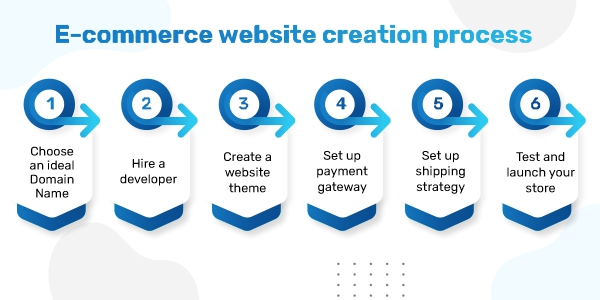
Table of Contents
STEP -1 How to Choose an Ideal Domain Name and Hosting?
Names have power, and this holds true for a website just as much as it does for anything else. Although having a good domain name is not the only metric that affects the success of your website, it is something that consumers write on the browser bar to visit your website. It is your “home” on the internet.
Making the right selection for your domain name is not an easy one. It is a meticulous process, and you must weigh all your options before settling on one. Here are a few questions you need to ask before picking out a domain name.
- Is it relevant? A domain name must be something related to the products or services you want to offer.
- Is it short? Long names are harder to remember. A clear and concise name can easily be typed on a search engine and used for marketing purposes.
- Is it easy to pronounce? Complex words must be avoided while deciding on a name. It can be confusing to remember an email address that has numbers and special characters in it.
- Is it catchy? You must choose a name that is brandable and unique. A generic name can easily be forgotten, and there might already be a few sites with a similar name.
Once you’re sure about a domain, you can purchase it from domain registrar services like Bluehost, GoDaddy, etc. Make sure that the domain name you want is available. If not, you can browse through the recommendations and choose the one that feels like the right fit.
After deciding on a domain name, you can move on to the second step of e-commerce website creation.
STEP -2 Hiring a developer or using a website builder?
Before choosing a platform, you need to ask yourself certain questions-
- Who will design the website?
- What is your budget?
- What will your site look like?
There are two ways to build a website from scratch- Either hire a developer or choose a web builder that enables you to build a website using simple tools.
How can a developer help you?
The process of e-commerce website creation is easier with the help of a developer. Before hiring a developer, research and see examples of websites they’ve already built. Ensure that they are on board with your vision and fully understand your requirements. Since they are technically sound and have a lot of experience in building websites, they will be able to set it up quickly.
A developer can help you with certain features:
Mobile-optimized website design: As we all know, the rise of smartphone users is massive, and most of your target audience would be them, so to cater, it’s vital to have a straightforward, up-to-date responsive design of both front end and admin areas.
Third-party integrations– Integration with payment gateways, shipping providers, marketing automation systems, and customer support software is required while creating your e-commerce website.
Marketing Instruments – There’s a lot of competition in the e-commerce domain. If you don’t have a solid marketing strategy, it’ll be challenging to get visitors. Marketing helps you get the word out and lets the world know that you exist. Besides helping you with the e-commerce website creation process, Paxcom can also help you run marketing campaigns such as reward point systems, discounts, coupons, etc. Offering reward points motivates customers to interact with the website more often. These points can then be redeemed for additional discounts and coupons.
Additional Search Engine Optimization (SEO): helps pages to get a higher rank in search engines like Google. From creating links to structuring pages, having an experienced SEO expert working on the SEO of your website would help bring in more traffic.
We at Paxcom have a designated team of developers to help you with all of your website integrations and back the website with Omnichannel systems such as PIM (which allows you to add or update products quickly without any hassle), warehouse & order management.
Why choose website building platforms?
Website Building Platforms provide you with beautiful templates that can be easily customized based on your requirements. This feature has made them extremely popular nowadays as they take care of the technical jargon and lets you focus on the design and content. With their drag and drop feature, they make website building look like assembling a PowerPoint presentation.
Here are some popular website builders –
- WordPress is an open-source website creation platform that does not cost a dime to install and use.
- Wix is a website-building tool with easy drag-and-drop capabilities, but it is relatively expensive and not recommended for more significant sites.
- Drupal is a powerful platform. It is not the best option for beginners since it has a higher learning curve.
- Squarespace’s innovative designs and templates make them ideal for artists, graphic designers, and photographers.
- Joomla is similar to WordPress. If you are familiar with programming or coding, it might be the right choice for you.
STEP- 3 What is the Advantage of Having a Perfect Website Theme?

How your website looks and feels holds as much importance as what it has to offer. It takes users about 50 milliseconds (0.05 seconds) to form an opinion about your website, determining whether they like it or not and whether they will stay or leave, as per Graffiti’s 9 research. Your website will help you in showcasing your brand personality to anyone who visits it. This is an essential step of our e-commerce website creation guide since every design element that goes up on your website will be a representation of your brand.
When you hire someone to design your website, you must instruct them on the theme and elements such as colors, fonts, style, layout, functionality, and other elements that suit and represent your brand and its values, among other things.
If you’re using a platform builder and doing it on your own, it might get a little overwhelming. So it’s always better to plan and move ahead according to it.
- Images and Videos: Identify the target audience for your products and determine the best way to speak to them. Having lifestyle images and good quality videos on your site is a proven sales method. It invokes an emotional reaction in the visitors and also builds credibility.
- Your content should be organized based on your target market and how best to communicate this information. It should answer every question a user might have about your product, from its grammar to its features and benefits.
- Consistency in your brand colors throughout the website and quality graphics help you enhance your content. You can create an iconic brand identity by sticking to your brand colors. When people see a swoosh sign in black and white, they immediately know it’s from Nike. That’s what branding is all about.
Our team of content experts can help you optimize website content as per your brand guidelines and requirements.
STEP-4: How to choose the right payment gateway?

To close a sale, it is important to have the correct payment method. There are various options available in the market, and you must research which option is the best for your business. If your method is too complicated or confusing, the consumer might abandon their cart. An e-commerce website must provide more than one payment method since people prefer to use more than one method. This helps in increasing your chances of conversions.
Here are some of the payment methods you can integrate into your website:
- Cash On Delivery: Even with the advent of various online payment options, the majority of people choose the Cash on Delivery option. Though it’s not necessary that customers pay cash only, they can also use credit/debit cards when their products are delivered.
- Debit/Credit Card payments: This is one of the most widely used payment methods as it is relatively easy to use. Credit cards are simple to use, and by allowing payment acceptance via cards, you can reach out to an international market. One of the main differences between a debit and credit card is that the latter can only be used to make payments with money already in the bank account, while a credit card can be used to make payments anytime within the billing period.
- Bank Transfer: Even though bank transfers are not as popular as they used to be, they are still considered an essential payment method for e-commerce. Since it needs to be approved by the customer, it is one of the most secure payment methods.
E-Wallets: A digital wallet allows one to do online transactions through a mobile app. Using an E-Wallet is an easy procedure that takes very little time. Once you’ve signed up for it and linked your bank account, you can withdraw or deposit funds whenever you want.
STEP-5: How to set up an ideal shipping strategy?
Shipping is one of the most critical ways through which you can satisfy your consumers. No matter how good your product and business strategy is, it will not work if your product is not delivered on time. So you must strive hard to provide a seamless shipping experience. To streamline your shipping strategy, you can integrate your shipping services with various delivery partners, such as Delhivery, Bluedart, etc.
You need to decide on your shipping solution. Do you have your own shipping infrastructure, or will you outsource it? Nowadays, there are lots of order and inventory management software that will automate your tracking and delivery processes, thereby freeing you up for other matters.
STEP-6 Preview and Publishing
The last and final step of the e-commerce website creation process is to double-check everything. You must do a test run on your order. Check if you can add your products to the cart and if the payment process is smooth.
Open and test your website on a mobile, tablet & desktop and see how it looks and if it’s responsive on different devices.
Make sure it runs smoothly on the various browsers available-chrome, Firefox, Safari, etc. Once you’re done with the testing, you can launch your store.
Getting traffic and conversions on your website will be a gradual process and won’t happen instantly after launching. Search engines take time to index your website.
Bottomline
Today, building a website from scratch is easier than it’s ever been. If you’re someone who has been dreaming about testing the e-commerce waters, we hope that you have learned a thing or two from this blog post on the e-commerce website creation process, and if you have any questions, please don’t hesitate to reach out to our e-commerce experts at info@paxcom.net.







